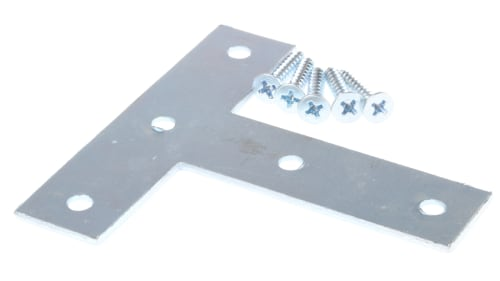
phloaw
Members-
Posts
17 -
Joined
-
Last visited
phloaw's Achievements

Member (3/5)
0
Reputation
-
Thanks. I'd still like to know whether those blocks are standard breeze blocks (aka aggregate) or aircrete (aka thermalite). Any guess?
- 5 replies
-
- concrete blocks
- anchor
-
(and 1 more)
Tagged with:
-
Thanks. I need to hang a radiator on a dot and dab wall in the same house, and the blocks are the ones showed here. Need to decide what fixings.
- 5 replies
-
- concrete blocks
- anchor
-
(and 1 more)
Tagged with:
-
Hello, this is a house in UK, built in the early '70s. Some parts of the outer walls are made of concrete blocks. I suppose they are one of the usual types: e.g., aggregate, lightweight or aircrete, but I'm not sure which one. I would like to know in order to buy the appropriate anchors/fixings. Any suggestion/input welcome. Their size is approximately 44.5x22cm, they have no identifying signs or marks visible. I attach pics. TIA
- 5 replies
-
- concrete blocks
- anchor
-
(and 1 more)
Tagged with:
-
One pic shows the experiments I'm doing with supporting a type 11 radiator (160cm wide, 50cm high, total weight around 35kg) using universal column radiator feet. The other pic shows the detail of the contact surface between the rad and the feet. Aesthetic considerations apart, is there foreseeable problem with what I'm doing? Of course, the feet would be in addition to standard wall-mounted brackets (which I wanted to complement because I don't trust their strength, for various reasons). I'm asking because these feet are sold to be used on column rads, which my rad is not: https://radiatorvalves4u.co.uk/516-column-radiator-foot-white/ Thanks
- 3 replies
-
- radiator
- load capacity
-
(and 1 more)
Tagged with:
-
Identifying material on masonry wall
phloaw replied to phloaw's topic in General Construction Issues
Thank you! I was also fearing Thermalite, but wanted additional opinions. I've seen there are special plugs for Thermalite, as opposed to normal rawlplugs: would you recommend them? PS: the total radiator weight should be between 30 and 40kg. -
The inner side of an exterior wall in my house has, behind the plasterboard, a kind of masonry which I'd like to identify. I attach pictures. It looks like concrete but it's quite easy to drill: I can very easily drill it with a 2mm wood/metal drill bit in a HAND (i.e., not electric) drill. This material is at least 5cm thick (maybe more), as inferred from the hole I drilled. So, what's the name of that substance? Is it safe to hang heavy stuff (e.g., a radiator) to it using rawlplugs? Thanks!
-
I need to hang a radiator (160cm wide, 50cm high, total weight around 35kg) via two brackets to a plasterboard wall. The wall is external, so that it has studs (about 12mm deep and 50mm wide) behind the plasterboard and then bricks behind the studs. I am lucky enough to have studs in correspondence of my brackets. However, I was wondering whether the 12mm depth of the studs would be enough for the screws to bite, or if I should reach to the bricks behind the studs and fix the brackets to them. If I can use the studs, how do I make sure that the screws go through the whole 12mm, given that this will be prevented by them hitting the bricks? Thanks.
-
Possible, but since there is a reasonable alternative to avoid plasterboard fixing, I'll try that first.
-
Which means each plate will have one bracket attached to its left end, and one attached to its right end.
-
I will fix rectangular or tee steel plates centered to the stud, then the brackets will be attached to the ends of the plates. Since the vertical radiator is narrow, I hope this works. Of course I'd be quite interested in any possible objection about this plan, before I start
-
Thanks for the answer. However, I do not intend to fix the radiator to the the plasterboard. That's why I'm asking about the stud.
-
I'd like to hang a gas central heating vertical radiator on a single timber stud behind a thin plasterboard wall. The stud is 38mm wide (actual size) and (presumably, difficult to measure) around 75mm deep. The radiator would weigh around 35kg in total, spread across a number of screws which can vary between four and ten (I have some freedom with that). Would that be ok? If yes, what screw size would you recommend? Thank you.
-
Nice. Is your 80kg rad fixed to studs or to plasterboard?
-
Thanks! Given the fact that the weight of the empty radiator will be between 10 and 20 kg, would you have any advice about which gauge the steel plates should be?
-
Hi, I have an internal, decorated plasterboard wall with poor studding: from left to right, there is a 22mm wide (i.e., horizontally parallel to the wall) stud, then a 38mm stud (the two studs are spaced 60cm), then the jack stud of the door. I need to hang a ~2500 BTUs radiator, and I'd prefer to avoid both hanging on plasterboard and adding battens/noggins to fix the brackets. So I thought to fit a vertical radiator (total width 27cm) by fixing all the four brackets to the 38mm stud via steel plates/flat brackets similar to this one: Would that work or be doable? Any suggestion welcome.

